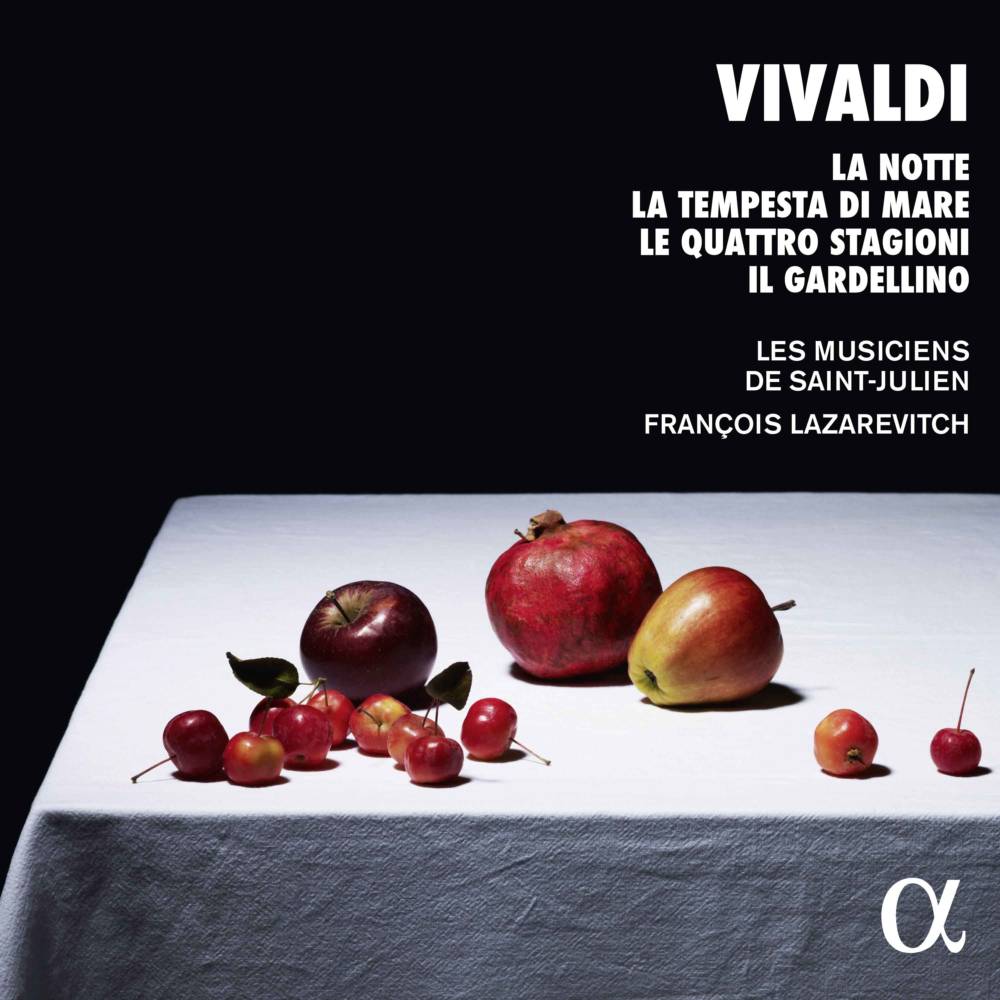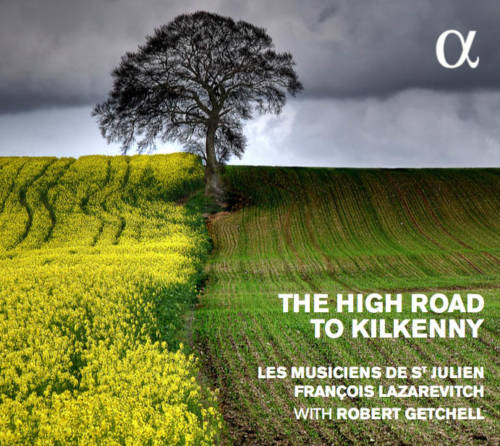JS Bach, flute sonatas
and works by CPE Bach

Description
The work of Johann Sebastian Bach for flute and harpsichord or basso continuo is a peak of chamber music in the 18th century, paradoxically little played in concert, and which we will hear with renewed pleasure.
The Musicians of Saint-Julien, François Lazarevitch on flute, an artist with an atypical background, joined by Justin Taylor on harpsichord and Lucile Boulanger on viola da gamba, give a vivid interpretation, managing to combine the depth of musical thought and the bouncing lightness of the phrasing.
These four sonatas offer an extraordinarily varied palette of feelings, and perfectly illustrate Bach’s invention and extraordinary mastery in all genres and styles. His science of counterpoint of course, first of all in the trio sonatas, but also of the concertante style (sonata in E minor), of dance (with the famous panting jig of the sonata in B minor), up to that, more unexpected, in the gallant Berlin style, with this true homage to the flautist King Frederick II that is the sonata in E major.
CD of the program available from Alpha Classics with Jean Rondeau on harpsichord.
Trio
François Lazarevitch, transverse flute
Lucile Boulanger, viola da gamba
Justin Taylor, harpsichord
Production
Les Musiciens de Saint-Julien
Thanks to superlative virtuosity, François Lazarevitch and his musicians take the listener into a whirlwind that leaves his head in the stars… This version stands at the top of the discography.
Classica
JS Bach, Sonates pour flûte ⎜réédition

 Choc de Classica
Choc de Classica De Volkskrant 5/5
De Volkskrant 5/5
Alpha productions • Alpha 490 • ISBN 3760014194900 • 1 CD • 1 h 23
- Sonate en si mineur – Andante (7:18)
- Sonate en si mineur – Largo e dolce (3:27)
- Sonate en si mineur – Presto (part 1) (1:37)
- Sonate en si mineur – Presto (part 2) (4:17)
- Sonate en mi mineur – Adagio ma non tanto (2:19)
- Sonate en mi mineur – Allegro (2:46)
- Sonate en mi mineur – Andante (3:41)
- Sonate en mi mineur – Allegro (4:56)
- Sonate en mi majeur – Adagio ma non tanto (2:19)
- Sonate en mi majeur – Allegro (3:14)
- Sonate en mi majeur – Siciliana (3:24)
- Sonate en mi majeur – Allegro assai (3:17)
- Partita – Allemande (5:59)
- Partita – Corrente (3:51)
- Partita – Sarabande (4:29)
- Partita – Bourrée angloise (2:55)
- Sonate en la majeur – Vivace (3:55)
- Sonate en la majeur – Largo e dolce (3:09)
- Sonate en la majeur – Allegro (4:13)
Programme
Sonate en si mineur pour flûte et clavecin BWV 1030
Sonate en la majeur pour flûte et clavecin BWV 1032
Sonate en mi mineur pour flûte et basse continue BWV 1034
Sonate en mi majeur pour flûte et basse continue BWV 1035
Press
february 2020
On-mag.fr
Michel Jakubowicz
Of the seven Sonatas for flute and harpsichord and basso continuo written by Johann Sebastian Bach (BWV 1020 and BWV 1030-1035), the three musicians in this concert, namely François Lazarevitch (flute), Lucile Boulanger (viola da gamba) and Justin Taylor (harpsichord), offered us four (BWV 1032, BWV 1035, BWV 1030 and BWV 1034). They were not content only with these four Sonatas since they added to this program not only a Toccata for harpsichord in D major BWV 912 but also Transcriptions for solo viola da gamba of pieces in G minor based on works for lute and for flute by Johann Sebastian Bach.
The Four Sonatas of Johann Sebastian Bach performed during this evening at the Théâtre Grévin surprise with their permanent inventiveness, sometimes bordering on austerity, but revealing with each movement universes in perpetual renewal, vividly relaunching an inspiration always on the alert. The only piece for solo harpsichord appearing in this concert, the Toccata BWV 912 in D major, was in no way a minor work, since it was composed of five linked parts. It concluded in a dazzling and luminous manner, thus undermining the idea of a severe and hermetic Johann Sebastian Bach.
Finally, note in this concert the transcription for solo viola da gamba of two pieces originally written for the lute and the flute. Only one of the most gifted sons of the great Cantor of Leipzig will venture into the path traced by his father in the harpsichord and flute genre. These are the Sonatas for flute and harpsichord by Carl Philipp Emmanuel Bach marked by a certain inclination towards Rococo style.
The interpretation of Johann Sebastian Bach’s Sonatas given during this concert was captivating by the virtuosity and musicality of three musicians, totally immersed in these fascinating musical labyrinths that few performers are capable of bringing to their conclusion. François Lazarevitch, on flute, Lucile Boulanger, on viola da gamba and Justin Taylor on harpsichord in fact provided a formidable unity to this program entirely devoted to the chamber aspect of the work of Johann Sebastian Bach. After a warm welcome from the public at the end of this concert, the three musicians gave two superb encores: one boldly mixing Bach and Irish folklore, the second celebrating Rameau with an extract from the Pieces de clavecin en concert.
may 2014
Classica – Choc
Philippe Venturini
Bach takes care of you
Thanks to superlative virtuosity, François Lazarevitch and his musicians take the listener into a whirlwind that leaves his head in the stars. The first bars of the Andante from BWV 1030 raise fears of a virtuoso reading by young people in a hurry. Going tempo, compelling syncopations, impeccable set-up, very straight delivery, impeccable accuracy: such perfection impresses. But as the music unfolds, we understand that this was an attention-grabbing curtain-raiser and not an interpretative focus for the entire program. Very quickly, the repeated eighth notes (G then F) reveal a fluidity of phrasing which owes nothing to mechanics but comes from speech and its punctuation. And in this particularly developed movement, of more than a hundred measures, in which the flute and the harpsichord share a real concert dialogue, Bach took care of the most subtle inflections, using a constantly varied rhythm.
This is one of the strengths of this version which stands at the top of the discography despite very careful Frans Brüggen, Barthold Kuijken and Jed Wentz: going to the bottom of the notes without ever taking the pose of the thinker or adopting a didactic language . François Lazarevitch reveals in his presentation text the secret of this success: the reading of a manuscript by Quantz, kept in the royal library of Copenhagen, rich in lessons on articulation and uneven notes. Obviously, the flautist will not systematically hiccup his melodic line but he shapes it according to a flow which very often approaches spoken language. François Lazarevitch and his accomplices let this music express itself with a disconcerting naturalness.
“Under his hand every piece seemed like a real speech,” Forkel wrote of Bach. The Musicians of Saint-Julien have not forgotten him.
may 2014
De Volkskrant – 5 étoiles
Guido van Oorschot
One balmy summer night in 1720, J.S. Bach must have thought: how could I collect the smell of honeysuckle and put it to music? On a delicate ostinato motif, he unfolds an ethereal flute melody. For the Andante alone of the intoxicating Sonata for flute and basso continuo in E minor Bach deserves his worldwide fame. It must be said that this genius composer must have foreseen the arrival of a baroque ensemble called the Musiciens de Saint-Julien. And that its conductor, François Lazarevitch, would respond magically to Bach’s chamber music for transverse flute. Four sonatas and the famous Partita: superbly played and accompanied with refinement on harpsichord, viola da gamba and lute.








